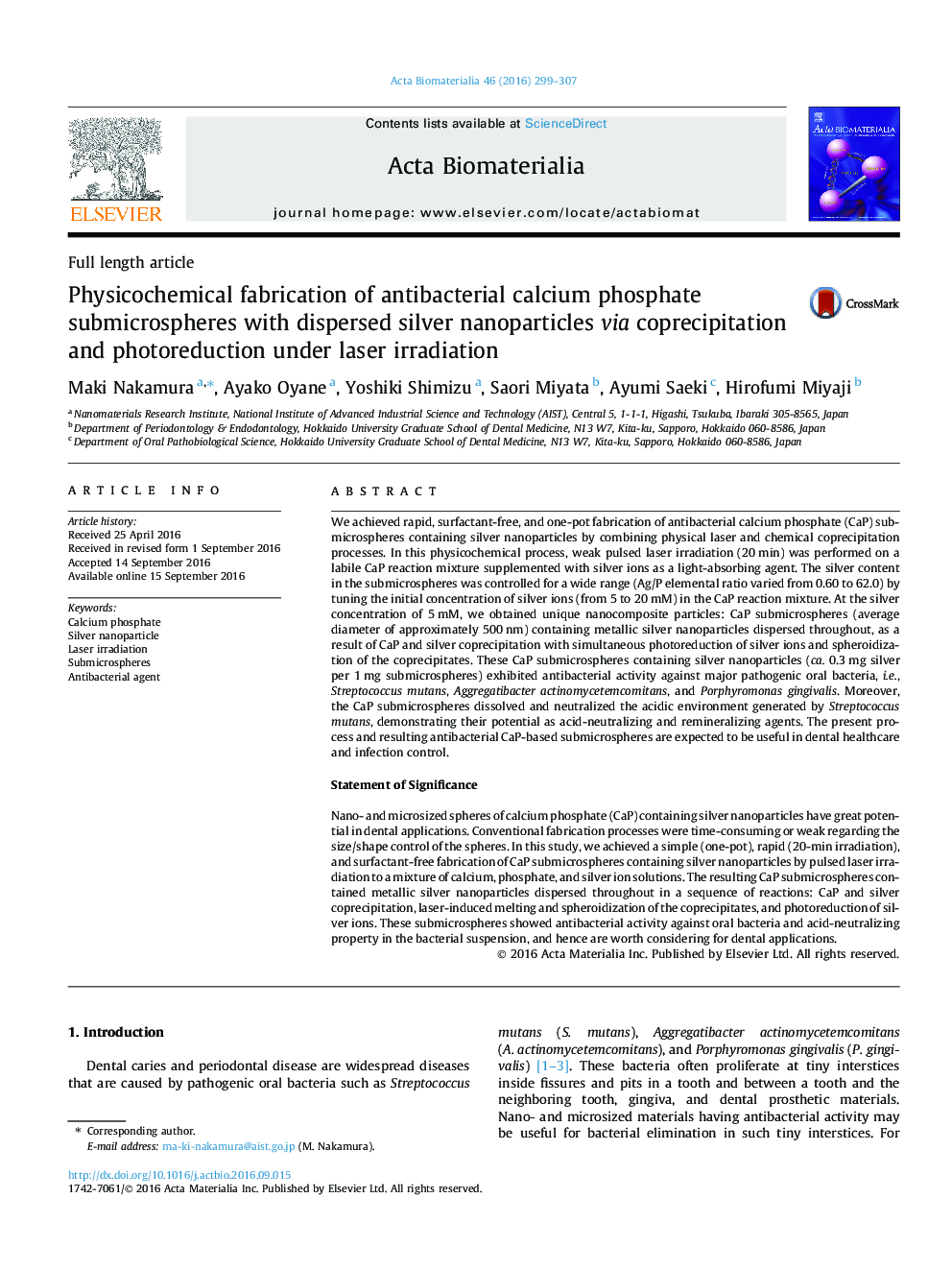| Article ID | Journal | Published Year | Pages | File Type |
|---|---|---|---|---|
| 6450178 | Acta Biomaterialia | 2016 | 9 Pages |
We achieved rapid, surfactant-free, and one-pot fabrication of antibacterial calcium phosphate (CaP) submicrospheres containing silver nanoparticles by combining physical laser and chemical coprecipitation processes. In this physicochemical process, weak pulsed laser irradiation (20Â min) was performed on a labile CaP reaction mixture supplemented with silver ions as a light-absorbing agent. The silver content in the submicrospheres was controlled for a wide range (Ag/P elemental ratio varied from 0.60 to 62.0) by tuning the initial concentration of silver ions (from 5 to 20Â mM) in the CaP reaction mixture. At the silver concentration of 5Â mM, we obtained unique nanocomposite particles: CaP submicrospheres (average diameter of approximately 500Â nm) containing metallic silver nanoparticles dispersed throughout, as a result of CaP and silver coprecipitation with simultaneous photoreduction of silver ions and spheroidization of the coprecipitates. These CaP submicrospheres containing silver nanoparticles (ca. 0.3Â mg silver per 1Â mg submicrospheres) exhibited antibacterial activity against major pathogenic oral bacteria, i.e., Streptococcus mutans, Aggregatibacter actinomycetemcomitans, and Porphyromonas gingivalis. Moreover, the CaP submicrospheres dissolved and neutralized the acidic environment generated by Streptococcus mutans, demonstrating their potential as acid-neutralizing and remineralizing agents. The present process and resulting antibacterial CaP-based submicrospheres are expected to be useful in dental healthcare and infection control.Statement of SignificanceNano- and microsized spheres of calcium phosphate (CaP) containing silver nanoparticles have great potential in dental applications. Conventional fabrication processes were time-consuming or weak regarding the size/shape control of the spheres. In this study, we achieved a simple (one-pot), rapid (20-min irradiation), and surfactant-free fabrication of CaP submicrospheres containing silver nanoparticles by pulsed laser irradiation to a mixture of calcium, phosphate, and silver ion solutions. The resulting CaP submicrospheres contained metallic silver nanoparticles dispersed throughout in a sequence of reactions: CaP and silver coprecipitation, laser-induced melting and spheroidization of the coprecipitates, and photoreduction of silver ions. These submicrospheres showed antibacterial activity against oral bacteria and acid-neutralizing property in the bacterial suspension, and hence are worth considering for dental applications.
Graphical abstractDownload high-res image (320KB)Download full-size image
